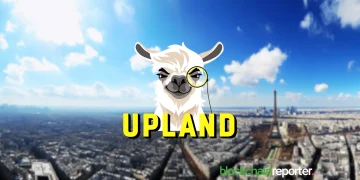Amid rapid technological advances, especially blockchain, artificial intelligence, augmented reality, virtual reality, and 3D, the far-fetched dream of a fully-functioning virtual replica of the real world – the metaverse – is coming to fruition sooner than expected.
2021, in particular, saw the metaverse-mania taking over individuals and businesses. Big league players like Meta (previously Facebook) and mainstream luxury brands like Gap, Nike, Adidas, and dozens more, are foraying into the unexplored depths of the virtual realm, uncovering significant opportunities for all.
Much of the credit for the astounding growth of the metaverse over the last two years can be attributed to the emergence of various Web3 projects and service and infrastructure providers. And in this blog, we are looking at three disruptive Web3 projects that are reshaping business models as we know them.
A Super-App For Web3 And The Metaverse
Super-apps like China’s WeChat, India’s Paytm, and Indonesia’s Go-Jek, to name just a few, have positioned themselves as the most disruptive Web2 innovations. These apps offer a wide variety of services, such as social networking, bill payments, eCommerce, ticket booking, ride-sharing, and much more – all from a single interface.
A similar initiative is now unfolding across Web3 and the metaverse ecosystems. For instance, Upland, which began as a metaverse-based P2E game, has made commendable advances in its mission of becoming a Web3 super-app in 2023. The platform has added several new features and functionalities throughout 2022, including built-in messaging, direct social integration, increased focus on user-generated content, and much more.
Additionally, the team behind the popular real-world mapped game recently launched its open-dev tools infrastructure, allowing developers to create unique experiences and monetize them as needed. Upland’s open-dev tools infrastructure enables developers and creators to seamlessly connect their existing Web2 and Web3 products to its massive ecosystem, including its infrastructure, economy, and community. As a result, it adds more flexibility while also making Upland’s infrastructure adaptable for various use cases.
Upland’s capabilities, including a true ownership-based economy, real-world mapping, regulatory compliance, and a robust token economy, paired with its growing list of services and features, as well as multi-device and OS compatibility, make it a prime contender for the go-to super-app for both Web3 and the metaverse ecosystems.
Utility Before Everything Else
Many Web3 and metaverse projects, especially play-to-earn (P2E) games, are often criticized for their unstable token economics and lack of real-world use cases. For the average user, the idea of winning cryptocurrencies and non-fungible tokens (NFTs) that have no real-world applicability seems futile.
However, Singaporean Web3 startup Affyn intends to address this concern through its upcoming Play-and-Earn metaverse game, NEXUS World. The game leverages blockchain, augmented reality, and mobile geolocation technology to create a highly engaging and rewarding experience for users worldwide.
The standout part about Affyn is its high-utility token. According to the Affyn team, the ecosystem’s native $FYN token can be used to pay for real-world expenses. Unlike other in-game tokens, NEXUS World players can spend their in-game rewards on food, lifestyle, travel, clothing, and other daily expenses.
In addition, the platform has also come up with another innovative solution to add more utility across the metaverse and Web3 ecosystems. The platform’s native NFTs – Buddies – are designed to be cross-functional, meaning users can move their Buddies NFTs into other compatible metaverses and Web3 projects as needed.
Unlocking Passive Revenue Generation Streams
Built upon the Ethereum blockchain, Decentraland ranks among the largest open-world metaverses. The platform enables users to own virtual plots of land and monetize them in many ways, allowing users to generate decent returns on their investments.
The entire Decentraland metaverse is managed by a decentralized autonomous organization (DAO), meaning each token holder is part of the ecosystem’s administration and has some decision-making authority over the future roadmap of the ecosystem.
The land plots within Decentraland are mapped with real-world locations. Users can purchase the NFT linked to the land plot they prefer, build and expand their virtual properties, and unlock different ways to generate income. Users can rent out their plots, offer them to brands and creators for advertising, host events, and even sell virtual goods to expand their revenue sources.
Decentraland’s userbase has skyrocketed throughout 2021 and 2022 as premium brands like Samsung, Miller Lite, Adidas, Sotheby’s, D&G, Tommy Hilfiger, and many others continue to invest in its virtual properties. The platform’s infrastructure has also been used to host virtual concerts and fashion shows, further catapulting the value of the native $MANA token.























